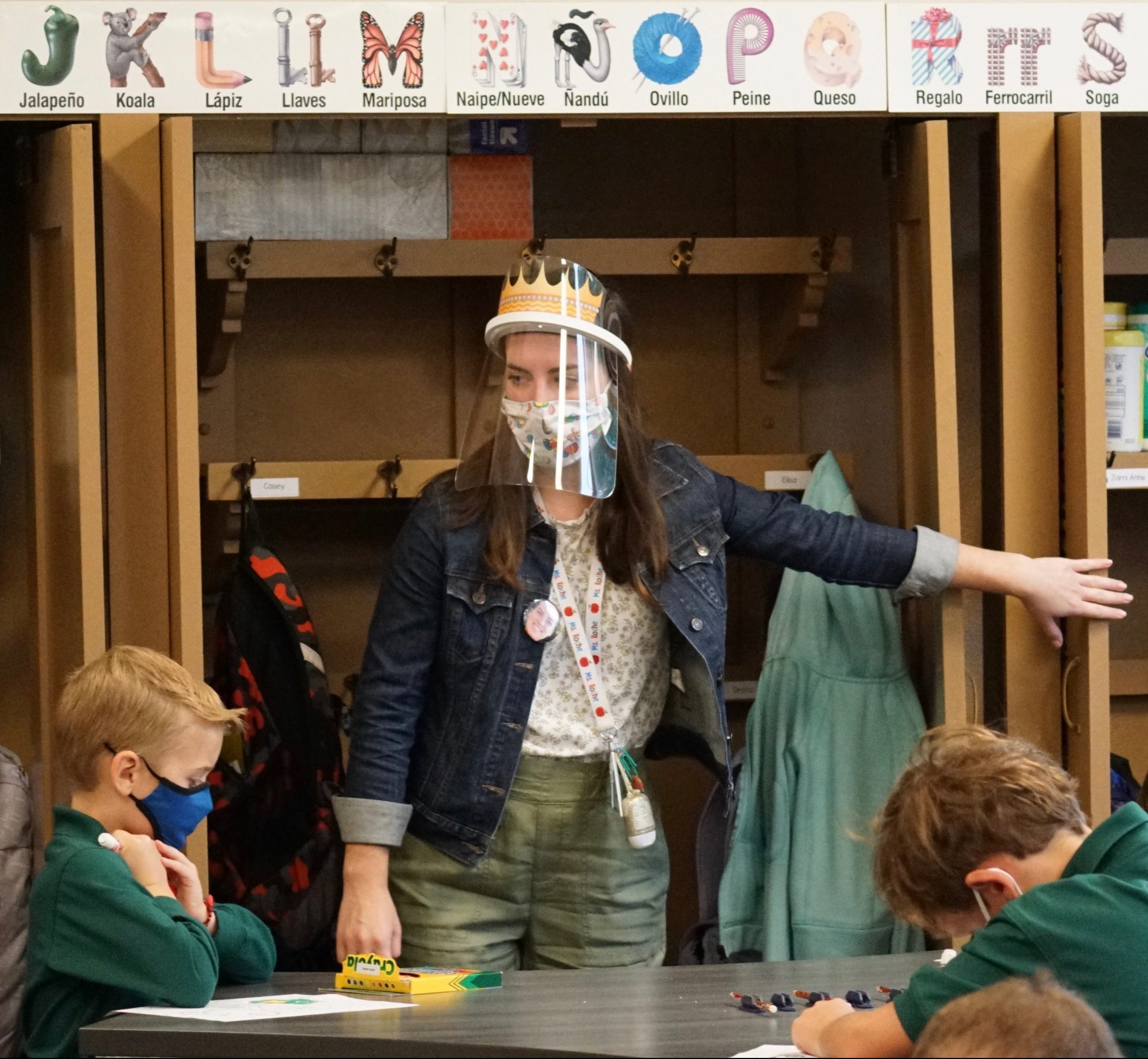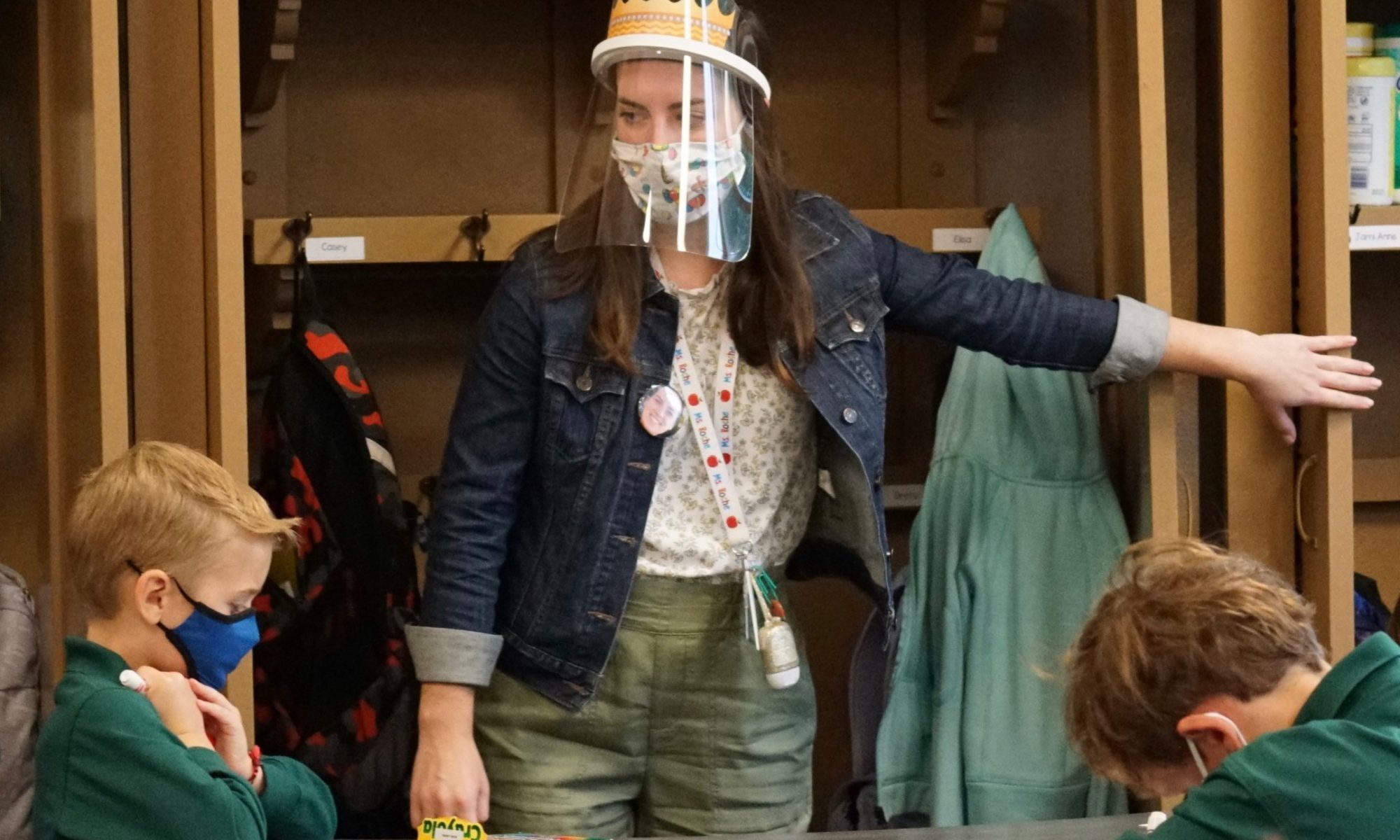
2020 St. Thomas graduate and current teacher Molly Roche is following COVID-19 protocol in her elementary classroom. Roche was student teaching in local classrooms when the pandemic hit and disrupted her experience. (Photo courtesy of Molly Roche)
Full-time student teaching in local classrooms is required for graduation from the University of St. Thomas School of Education and for a teaching license in Minnesota, but education majors had to adjust to online instruction when schools switched to remote learning due to the pandemic.
The shift to online and hybrid teaching methods presented unexpected challenges for education majors, yet their nontraditional student teaching experience prepared them for their future careers in a unique way.
“I learned not to get too comfortable,” said Molly Roche, a 2020 graduate from the School of Education, “The ability to throw away the plan and roll with the punches is something I mastered during my online student teaching experience.”
Many Minnesota classrooms closed last spring and again in the fall due to COVID-19 precautions, forcing students with teaching placements to abruptly adapt.
“Student teachers were in a tricky position,” said Roche, who was student teaching third graders in-person when the pandemic hit. “We were kind of in limbo while we waited for our individual schools to formulate their own plans.”
When Roche’s school chose to move classes online for the remainder of the year, it affected her ability to apply the concepts she had learned in her education. Remote teaching was never her plan, and though the School of Education requires students to take a technology course, Roche wasn’t taught to prepare a remote lesson plan.
“People our age don’t run into a lot of situations where we struggle technologically, so having to figure out all these new tech things was kind of jarring,” Roche said.
As online assignments replaced typical classroom activities, Roche and her supervising teacher provided written or audio feedback, but personal connections were difficult to maintain remotely.
“The relationship we had with our students was just through typing comments, like you would on a Facebook status … it didn’t really feel like teaching,” Roche said.
Although the switch to online meant missing out on important classroom learning opportunities for many student teachers, there were also some benefits to their unique experience.
“Teachers always have to be able to think on their feet because kids can throw anything at you and you kinda have to roll with it,” Roche said. “The biggest unexpected gain was that we got a crash course in flexibility and thinking on our feet. I really learned how to roll with the unexpected, which is something that teachers need to do even when there’s not a pandemic.”
Recent School of Education graduate Hayley Dunning also learned adaptability in her unconventional student teaching experience when her placement school closed after Thanksgiving in November of 2020.
“The education system had to value this idea of flexibility and being able to find ways that we can serve our students, whatever that looks like,” Dunning said. “In the future, my experience will prepare me for any situation because I learned how to be flexible.”
Elementary Education Placement Coordinator and adjunct professor Anne Howard has been working with others at the University and with local school officials to get education students back in classrooms, and as of last month many students have been allowed to return to in-person teaching.
“Student teaching in classrooms is crucial, and online student teachers missed out,” said Howard. “The one advantage is that students got to see what it’s like to teach online.”
As the pandemic evolves, so does the student teaching situation, and strict enforcement of COVID-19 protocol in classrooms has begun to replace remote learning. Howard said that, while in-person is ideal, the cohort of students who taught online won’t be ill-equipped for their future employment.
“I don’t think the students will be lacking at all,” Howard said of the student’s future careers. “I think they’re going to have strengths in different areas, and that will likely be very advantageous for them down the road.”
Lauren Price can be reached at lauren.price@stthomas.edu.

